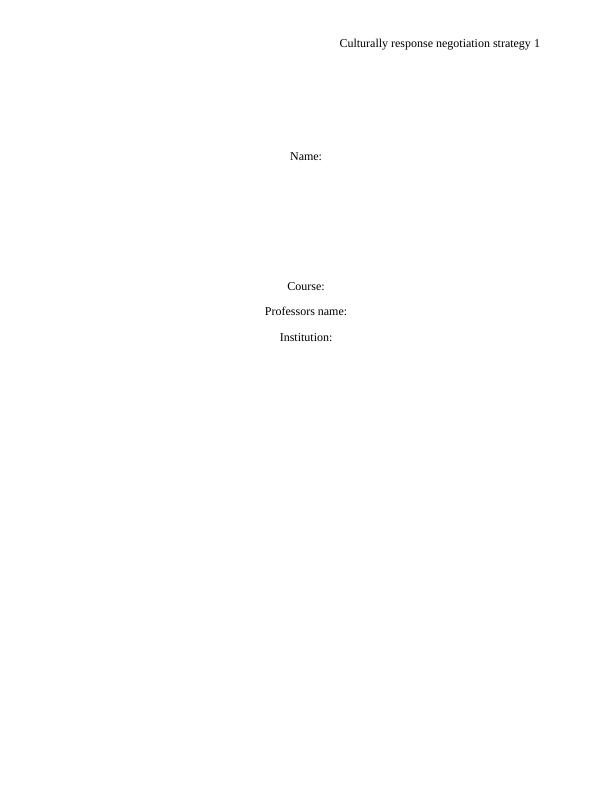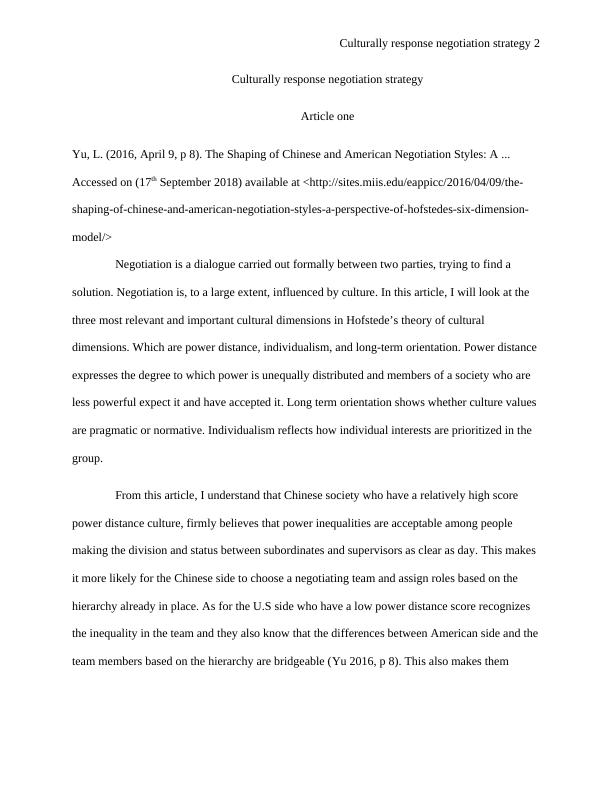Culturally Responsive Negotiation Strategies: Understanding the Impact of Culture on Negotiation
Added on 2023-06-04
8 Pages1531 Words263 Views
End of preview
Want to access all the pages? Upload your documents or become a member.
Cultural Traits and Business Negotiations in China
|12
|550
|72
Thailand Culture: Dimensions and Communication
|8
|1683
|120
Cultural Issues Faced by Huawei in International Market: Hofstede's Cultural Dimension Analysis
|8
|1496
|146
BUS020X652S Cross-Cultural Management
|18
|4608
|39
Cultural Differences in New Zealand: A Cross-Cultural Management Perspective
|6
|1451
|67
Hofstede Model of Cultural Dimension (Doc)
|7
|1422
|147


